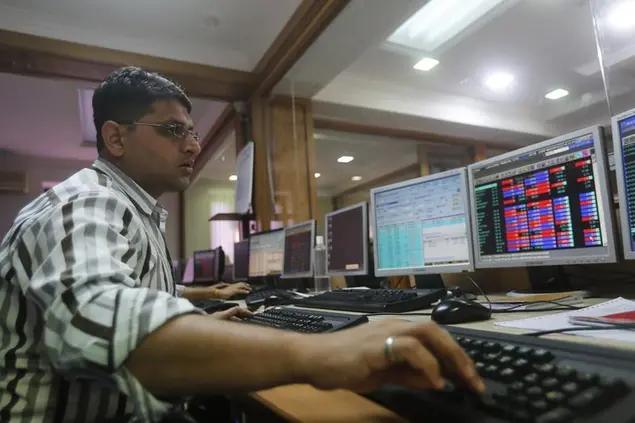PHOTO
Mumbai: After witnessing a sharp downturn on Monday, the Indian stock market opened in green territory on Tuesday, giving investors hope.
The benchmark Nifty50 at the National Stock Exchange (NSE) opened at 24,189.85, up by 290.60 points or 1.21 percent, while the BSE Sensex opened higher by 949.21 points or 1.21 percent to trade at 79,708.61.
Among the sectoral stocks, Bank, Auto, Financial Services, FMCG, IT, Media, Metal, Pharma, PSU Bank, Private Bank, Realty, Healthcare, Consumer Durables, Oil, and Gas opened in green.
The Foreign Institutional Investors on Monday sold net shares worth Rs 10,074 crore, while the domestic investors (DII) were net buyers in the Indian equities with an investment of Rs 9,156 crore.
There is a sharp bounce back in the Japanese and Korean markets this morning, and US stock futures are also up.
The market dipped amid apprehensions of a likely recession in the USA.
"The risk-off sentiment was pervasive, and India saw an FPI cash equity net outflow number of more than Rs 10,000 crores. DIIs in turn bought most of this stock, providing a basis for India's relative outperformance on a day of global panic. US Fed speakers provided some guidance that the Fed is not overreactive to one month's weak data, unlike the markets. This rules out an inter-meet emergency rate cut by the Fed, at least for now. We don't see US macros deteriorating into a recession for the next two quarters at least," said Ajay Bagga, Market and Banking Expert.
"The last few days' sell-off has been due to a vicious circle set up by the BOJ rate hike and the Yen appreciation, leading to margin calls and panic liquidation. There is no fundamental deterioration backing this. Yes, the valuations of the AI beneficiaries are getting hit as the payback period for AI investments is turning out to be in decades rather than in quarters. However, there are many options for investors, including a high-growth Indian market. We expect the margin calls to work out over the next few days, and today's market rise will see overstretched investors reducing leverage," he added.
On Monday, domestic equity indices experienced a sharp drop, with the Sensex plummeting 2,222.55 points, or 2.74 percent, to 78,759.40, and Nifty 50 falling 662.10 points, or 2.68 percent, to 24,055.60. The recent all-time high of 25,078 reached on August 1 could be viewed as a top reversal pattern, signaling a bearish short-term trend. The Nifty 50's next support level is anticipated at around 23,625 (38.2 percent Fibonacci retracement from June 4 to August 1), with immediate resistance at 24,250.
Asian markets traded higher on Tuesday, with Japan's Nikkei 225 rebounding 10.5 percent and South Korea's Kospi rising over 4 percent.
In the United States, the stock market also saw a significant plunge. The Dow Jones Industrial Average (DJIA) opened more than 1,000 points lower and ended the day down by 1,083.07 points, a decline of 2.79 percent, settling at 38,654.19.
The tech-heavy Nasdaq Composite Index experienced an even sharper drop, losing 680.15 points, or 4.05 percent, to reach 16,196.01.
Meanwhile, the S&P 500 fell by 164.67 points, a decrease of 3.11 percent, landing at 5,181.89. Globally, markets are reacting after the Sahm Rule got triggered on Friday, as US unemployment reached 4.3 percent. This is predicting a US recession.
The Sahm Rule indicates a recession has started when the three-month moving average of the US unemployment rate is 0.5 percentage points or more above its lowest during the previous 12 months.
Times of Oman
